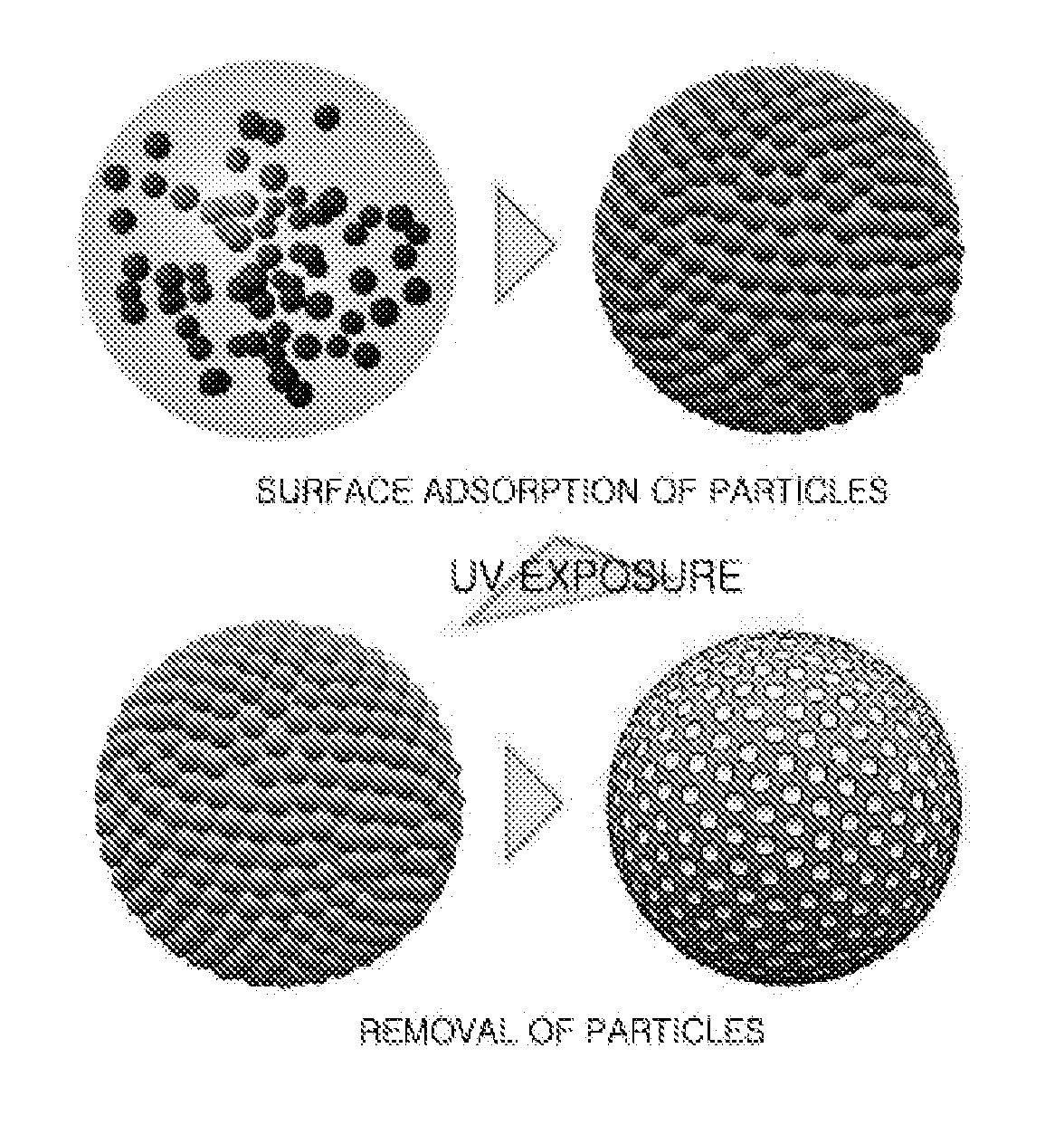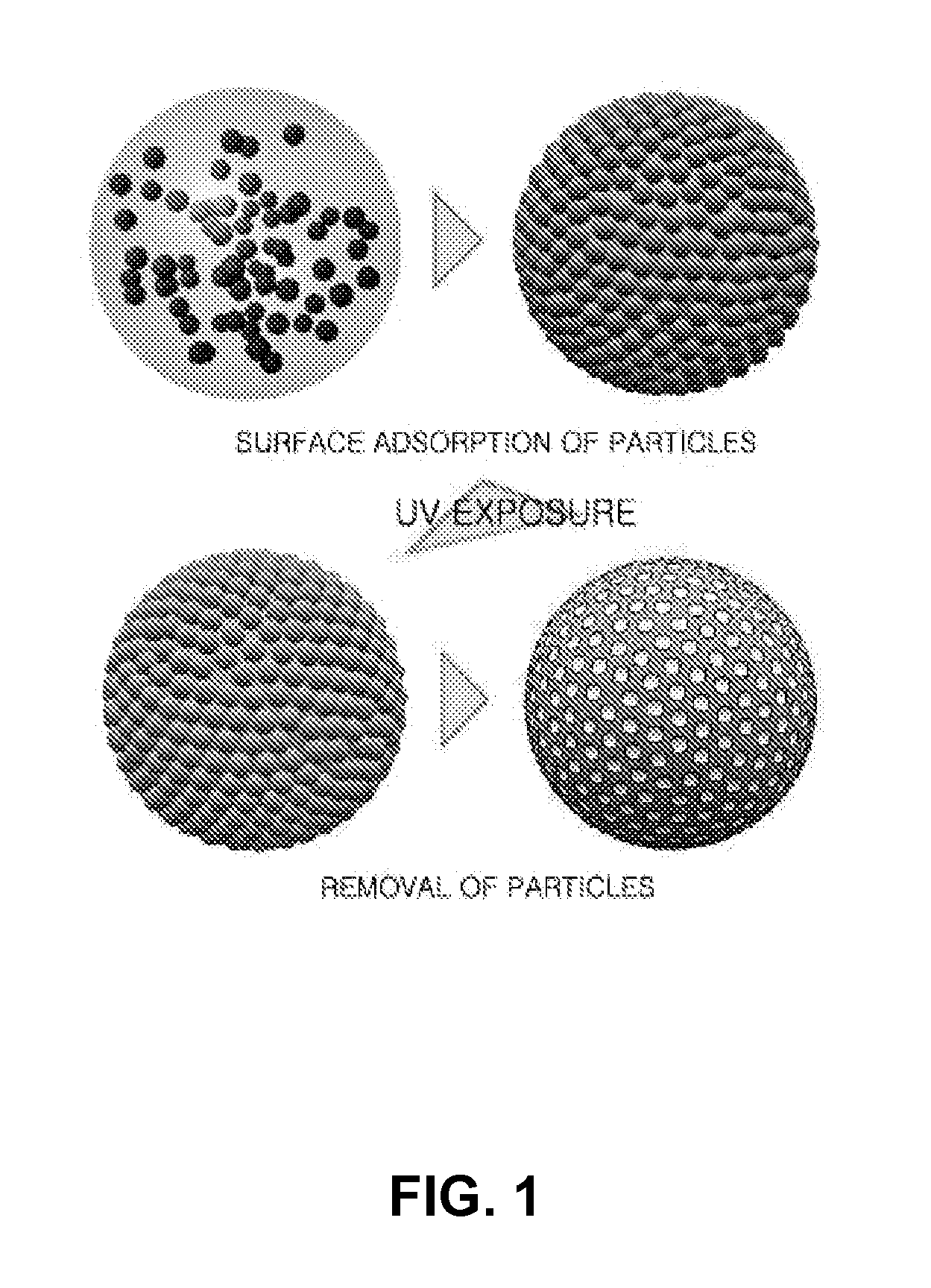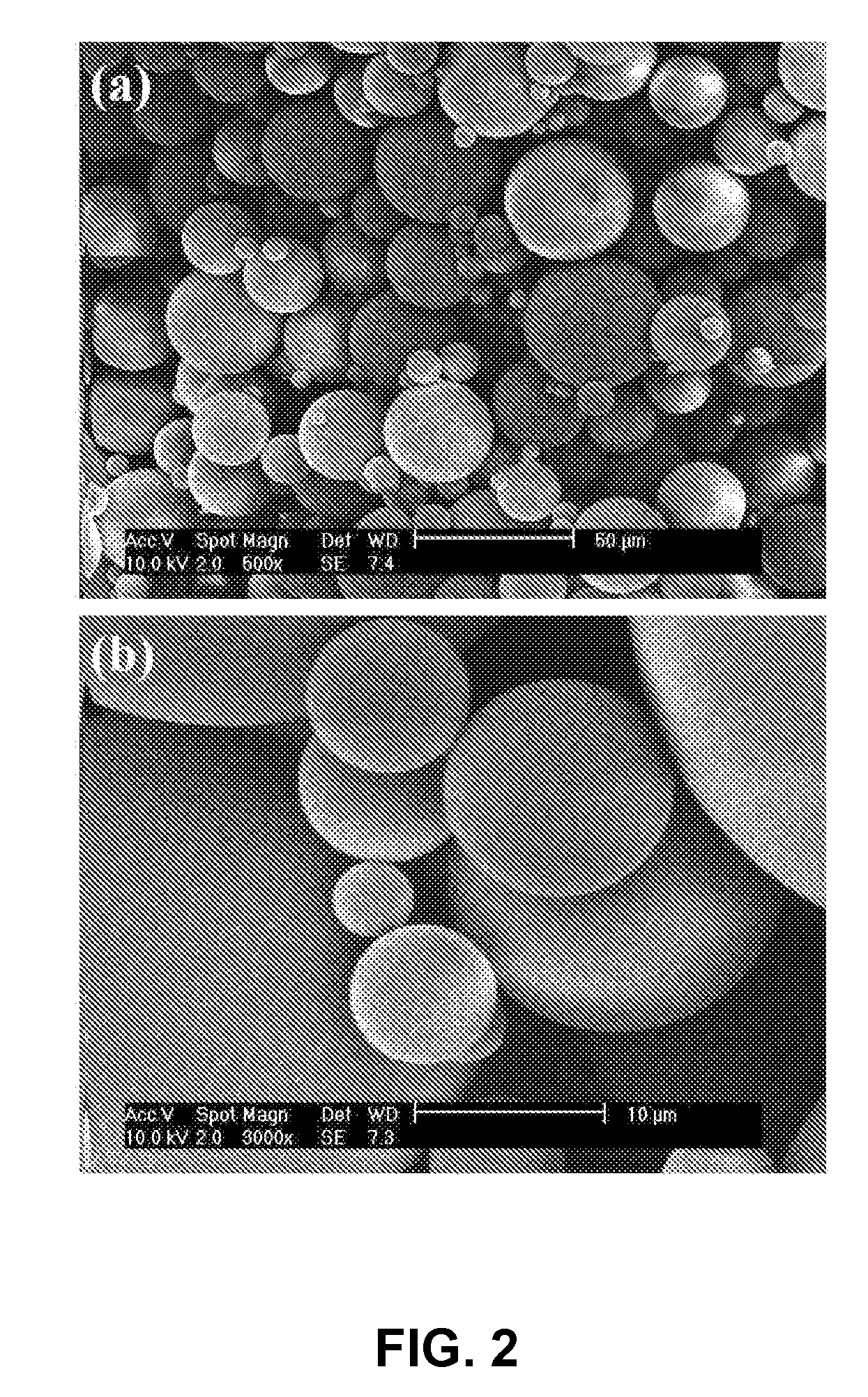Method for Fabrication of Microparticles with Colloidal Particle-Anchored Surface Structures
a surface structure and colloidal particle technology, applied in the field of colloidal particle-anchored surface structure fabrication, can solve the problems of difficult formation of desired surface structures, low particle fabrication speed, and complicated processing conditions, and achieve simple and fast processing conditions, improve surface structure and characteristics, and uniform control
- Summary
- Abstract
- Description
- Claims
- Application Information
AI Technical Summary
Benefits of technology
Problems solved by technology
Method used
Image
Examples
example 1
Non Uniform-Sized Microparticles
[0052]An ETPTA monomer solution containing 5% (v / v) silica particles with a size of 200 nm dispersed therein was introduced into a surfactant, that is, 1 wt. % Pluronic F108 (ethylene oxide / propylene oxide / ethylene oxide triblock copolymer, BASF) dispersed in water. Using a vortex mixer, the mixture was formed into liquid drops. Then, further using a homogenizer, the obtained liquid drops were treated at 16,000 rpm for 30 seconds in order to prepare droplets. Such droplets were exposed to UV radiation at 40 mW / cm2 for 5 seconds, thus curing the droplets into solids.
[0053]FIG. 3 is an SEM photograph illustrating microparticles formed according to the foregoing procedure. FIG. 3(b) shows the obtained microparticles having a surface structure formed of silica particles. FIG. 2 is an SEM photograph illustrating microparticles formed using an ETPTA monomer solution without dispersion of silica particles, according to the foregoing procedure. FIG. 2(b) show...
example 2
Uniform-Sized Microparticles
[0056]Using a silica-ETPTA monomer solution and a surfactant solution prepared by the same procedure as described in Example 1, uniform droplets were formed using a micro-fluidic device. 7.5 minutes after formation of the droplets, the same was exposed to UV radiation and photo-cured. As a result, microparticles having a regular size were obtained and a surface of the microparticles was formed with a hexagonal arrangement of silica particles.
[0057]FIGS. 5(a) and 5(b) are an optical micrograph and SEM photograph illustrating uniform-sized microparticles. Moreover, FIG. 5(c) is an enlarged photograph of one microparticle while FIG. 5(d) is another SEM photograph showing a surface of the formed microparticles.
example 3
Microparticles Having a Surface Structure of Colloidal Particles with Different Sizes
[0058]Microparticles were formed by the same procedure as described in Example 2, except that a silica-ETPTA monomer solution was prepared by dispersing two or more types of silica particles having different sizes in an ETPTA monomer solution. Since the ETPTA solution containing 5% (v / v) of silica particles having a particle size of 200 nm and 5% (v / v) of silica particles having a particle size of 1 μm dispersed therein was used, microparticles having a specific surface structure formed of these particles having different sizes were produced. According to the same procedure as described in Example 1, these microparticles were kept in a 5% fluoric solution for 10 minutes in order to remove silica particles present on a surface of the microparticles, in turn resulting in porous microparticles having holes with different sizes.
[0059]FIGS. 6(a) and 6(b) are SEM photographs illustrating microparticles ha...
PUM
| Property | Measurement | Unit |
|---|---|---|
| Fraction | aaaaa | aaaaa |
| Fraction | aaaaa | aaaaa |
| Size | aaaaa | aaaaa |
Abstract
Description
Claims
Application Information
 Login to View More
Login to View More - R&D
- Intellectual Property
- Life Sciences
- Materials
- Tech Scout
- Unparalleled Data Quality
- Higher Quality Content
- 60% Fewer Hallucinations
Browse by: Latest US Patents, China's latest patents, Technical Efficacy Thesaurus, Application Domain, Technology Topic, Popular Technical Reports.
© 2025 PatSnap. All rights reserved.Legal|Privacy policy|Modern Slavery Act Transparency Statement|Sitemap|About US| Contact US: help@patsnap.com



